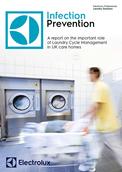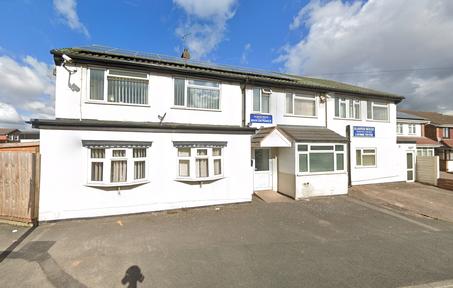Care sector research reveals laundry contamination risk

Over a quarter of care home staff in the UK do not feel their laundry is managed in a way which completely avoids contamination, according to a recent report on the sector.
The survey of over 160 care home professionals was conducted by leading commercial laundry solutions provider, Electrolux Professional ahead of the launch of its in-depth report on the important role laundry hygiene plays in care homes across the UK and Ireland.
Infection Prevention, the white paper from Electrolux Professional, details the collective attitudes of care workers from both the public and private sectors towards how cleanliness and hygiene are managed through their laundry processes.
As well as revealing that many laundry departments are not managed in a way which completely avoids contamination, the survey also found that nearly a third believe staff at their care facility do not fully understand the difference between visual and hygienic cleanliness. Five per cent of the survey’s respondents even recalled having knowingly experienced an instance where an infection outbreak could be traceable to laundry procedures.
Arguably as worrying are the inconsistencies between care home operators’ attitudes towards laundry processes compared with their managers’. 33 per cent of operators do not feel their laundry system is managed in a way which completely avoids contamination, compared to just 25 per cent of managers. Meanwhile, just 14 per cent of managers see contamination through linen as their prime concern when managing cleanliness, compared to 24 per cent of those operating the equipment.
The results of the research has led Electrolux Professional to publish its own guide to Laundry Cycle Management – an eight-step process which ensures every element of the laundry cycle is monitored in order to significantly reduce the risk of contamination.
This validation-based system offers guidance on some of the processes which can often be forgotten by operators, such as the proper packaging and transportation of dirty laundry via dedicated routes, and the correct storing of clean linen to protect it from damage by micro-organisms. Crucially, the process can be applied to traditional laundry operations as well as those with a barrier system in place.
Amanda Dufrane, Care Segment Manager at Electrolux Professional, comments: “With 19,000 care homes in the UK, the industry has a growing responsibility to ensuring all staff are fully aware of how to guarantee their residents are protected from the health risks which can result from a laundry which is managed improperly. "
“The fact that nearly half of operators admit they don’t think staff at their facility understand the difference between visual and hygienic cleanliness is a huge concern that the industry needs to address. There is a high probability that residents within a care environment are being put at risk of serious illness and this is a risk that needs to be eliminated before a severe outbreak occurs."
“The latest laundry concepts certainly go some way to offering complete hygiene assurance whilst playing their part in helping care homes to achieve positive resident wellbeing ratings, but can only do that if staff have a full understanding of how to use these systems to their full capabilities. In this respect, it is vital that care home managers invest in the appropriate levels of training to ensure all staff are able to keep hygiene firmly front of mind.”
To download a copy of Electrolux Professional’s report, Infection Prevention: A report on the important role of laundry cycle management in UK Care homes, visit www.electrolux.co.uk/professional.
Ensuring care home staff can benefit from a training programme completely tailored to their needs, Electrolux Professional’s Center of Excellence in Luton boasts a full working laundry, which houses a number of solutions including its barrier washing concept. For more information, or to register your interest in a training course, visit www.electrolux.co.uk/professional.
Latest Products & Services News
 24-Apr-25
New owner for established LD care home in Exeter
24-Apr-25
New owner for established LD care home in Exeter
 23-Apr-25
DC Care Sells Harper House
23-Apr-25
DC Care Sells Harper House
 16-Apr-25
Family-run residential care home in Solihull village sold
16-Apr-25
Family-run residential care home in Solihull village sold
 15-Apr-25
14-bedroom closed Hampshire care home for sale at £800,000
15-Apr-25
14-bedroom closed Hampshire care home for sale at £800,000
 15-Apr-25
24-bedroom Angus care home sold
15-Apr-25
24-bedroom Angus care home sold